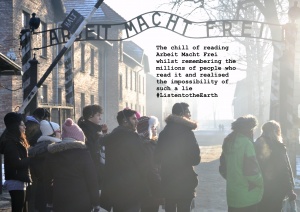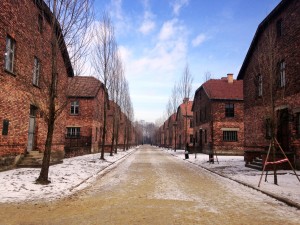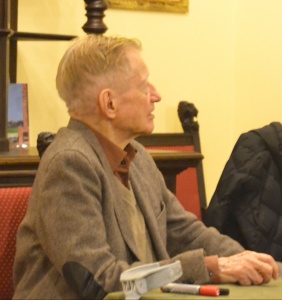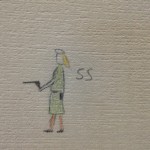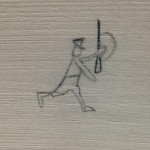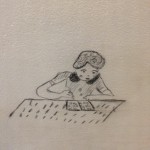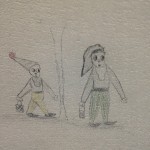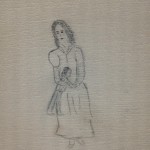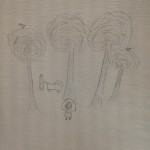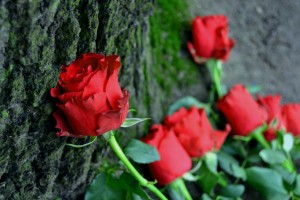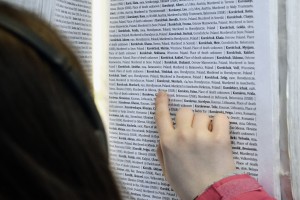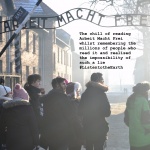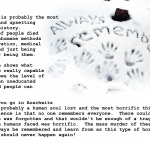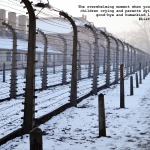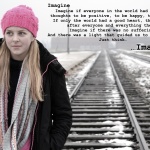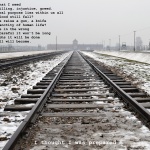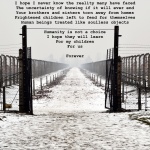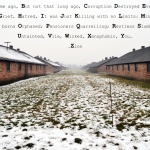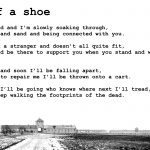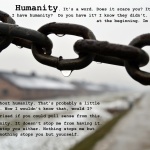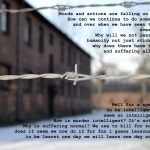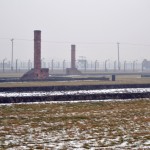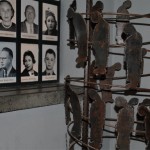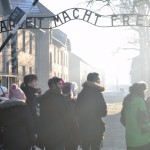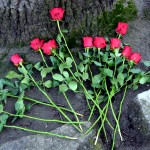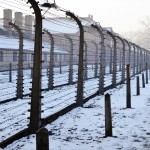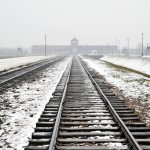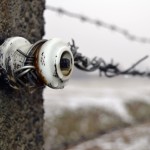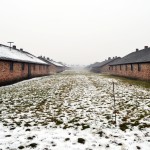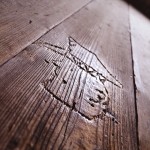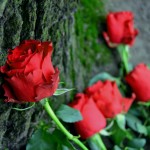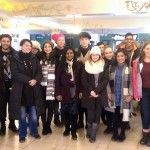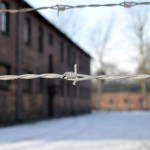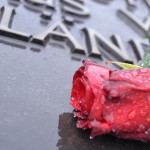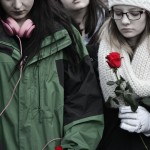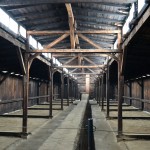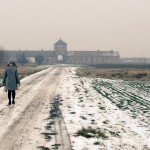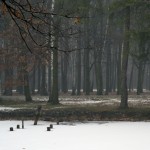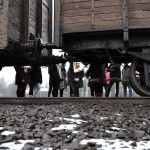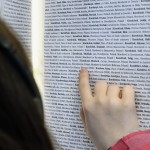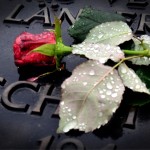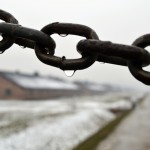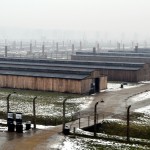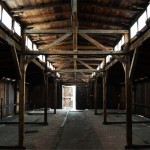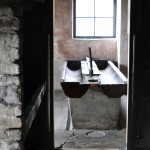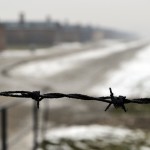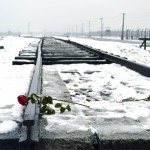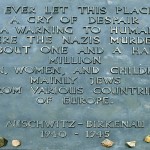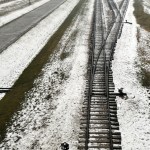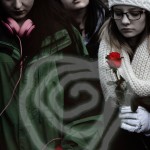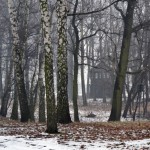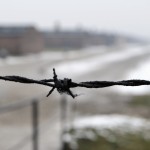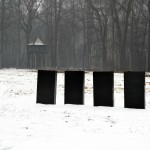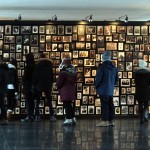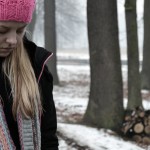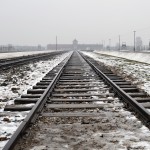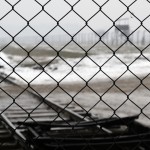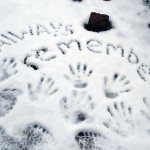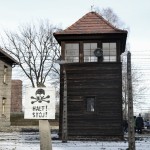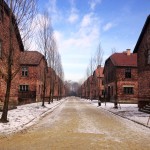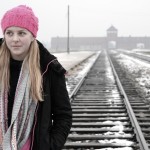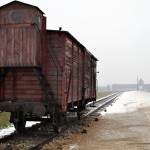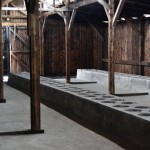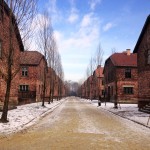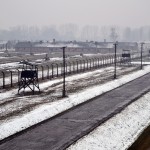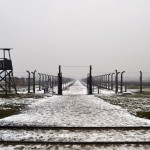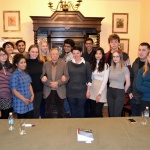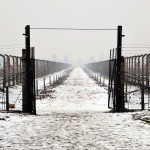On the 8th January 2016, 14 members of Oldham Youth Council and Oldham’s Children in Care Council travelled to Oswiecim, Poland. The trip was there to create an understanding of what happened during World War II, in particular to the Jews and the mass genocide they faced at the hands of Nazi Germany. The 14 young people, and the 4 staff supporting them, would become witnesses for future generations and pass on what they experienced in a hope that genocide can be stopped.
The group landed at Krakow Airport and took the hour drive to the Centre for Dialogue and Prayer, where they stayed for 5 nights using the centre as the base and a place for quiet reflection. We would like to thank Sister Mary, Beata and her team for supporting our work and an amazing environment to stay in. The task for the young people was to gain a photographic record of the trip, create short films and produce creative writings all to raise awareness of the Holocaust. Samples of the work are displayed on this page. This was also used to create an art installation at Oldham’s Holocaust Memorial Day Event on 27th January 2016.
With day 1 traveling and getting settled in, for day 2 we jumped straight into the morning with a guided tour of the first Auschwitz camp. Auschwitz I is mainly red brick barracks, in tree lined Avenues that wouldn’t look out of place as University dorms on any campus. Originally, army barracks the outside facade completely hides the horror that went on behind those walls. With Renate, our incredible tour guide, showing us around the buildings and informing the group as to what happened within the camp it was almost too much for some in the group. The rooms of prosthetics, suitcases, kitchen implements and children’s toys and dolls are enough to crack the most hardened of individuals. The display that seems to horrifys most , however, is that of prisoners hair. The Jewish prisoners would have their heads shaved as they came to Auschwitz ‘for sanity reasons to protect from the spread lice’ according the their captors. The amount of hair in that room was immense and the number of prisoners it must have taken to fill the display is just inconceivable. The tour would eventually take us through on of the many gas chambers but the image of all that hair will stand out for that group forever.
The afternoon of day 2 was spent with Mr Dlugoborski, who recounted his experience of Auschwitz I & II. His story of what he endured and how close he came to death through illness was inspirational for all who listened. The group even had the opportunity to question and answer session. When asked what we should learn from the holocaust and how it can be stopped from happening again he thought for a minute then suggested that what has been done already is not enough. We need more conversations about what happened and countries working more closely together to stop these atrocities.
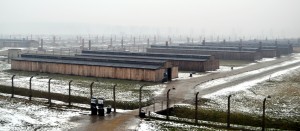
Every 2 chimneys represents one accommodation block designed to house 700 prisoners, in reality this was more like 1000.
Day 3 was another guided tour with Renate but this time around Auschwitz II – Birkenau. First the group walked from the Centre for Dialogue and Prayer to the camp tracing the railway lines that would have delivered prisoners to the camp. When we arrived the overwhelming feeling was how vast the place was. Were Auschwitz I was an army barracks converted to a camp, Birkenau was purpose built. German’s are famous for their organisation and ingenuity and it is on show here too. From extending the tracks right into the camp and separating useful prisoners from the old, young and pregnant this camp was designed meticulously to be efficient with its turnover of ‘residents’. Our guide suggested that from alighting the train to dying in the chambers could be as little as 20 minutes for some. The silence as we walked round was deafening, the only natural noise a lone woodpecker in the woods. We were shown the accommodation for prisoners, where they had showers and toilet facilities.
Each block was designed to house 700 hundred prisoners and as our picture shows there were many, many, many blocks. Too many!! Again our visit was another emotional roller coaster ride none more so than when we were shown round the Kindercamp were the children were kept. Firstly the fact families were split (men in one place, women in another and children entirely separate) must have been soul destroying. Being a child being away from your parents in such a horrible place would have been the stuff of night terrors. Other prisoners had drawn on the walls of the kindercamps with bright colourful pictures, like you would see on today’s private nursery windows, a mask of childhood over the hell they had to live in. The children themselves ‘graffitied’ the walls with small doodles. These were shown in a displayed in Auschwitz I and shown in the gallery below.
- Graffiti drawn by the young prisoners
- Graffiti drawn by the young prisoners
- Graffiti drawn by the young prisoners
- Graffiti drawn by the young prisoners
- Graffiti drawn by the young prisoners
- Graffiti drawn by the young prisoners
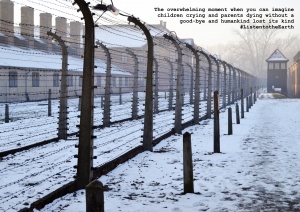
Tweet by Amber Collins
Although the group had prepared well for the trip the emotion of being in such a place overwhelmed them. The creative poetry, tweets, reflective writings and videos on this page are all created by the young people and clearly show how they felt. One young person, Mariam Waseem, also blogged about her experience. With everyone feeling emotionally drained Day 4 was an opportunity for some intercultural dialogue in the city of Krakow. This included short trips around the Jewish Ghetto, Schindler’s Museum (which unfortunately was closing as we arrived at 2pm) and Plac Bohaterów Getta (Ghetto Heroes Square, formerly ‘Plac Zgody’) were metal chairs can be found as memorial to Jews from the Kraków Ghetto on their deportation site. Each steel chair represents 1,000 victims.
Before returning home, on the morning of the 5th day we returned to Auschwitz I. It was an opportunity for the group to see some of the exhibitions missed on the tour but more importantly for the young people to lay a memorial of our own. Everyone laid a single red rose next to a tree near the gates to Auschwitz, each having the opportunity to say a few words if they wished. As we walked round the exhibits, emotionally raw from the violence seen in the pictures and displays, we finally came upon the book of names. The book fills an entire room and contains the names of those murdered during the holocaust, approximately 4.2 million names.
One of our group has Ukraine heritage and wanted to find something with her name on it while in Poland as nothing in England ever has her name on. This book wasn’t what she had hope for but is what she found.
Our 5 days spent in Poland only included 3 half day visits to the Auschwitz and Birkenau death camps. Even though this included guided tours of the Auschwitz and Birkenau Memorial Museum from our amazing guide Renate, we don’t feel this site can or should be witness to the Holocaust as we can’t tell the whole story and don’t want to give incomplete information. Please click the link above to find out more and be informed of what happened during World War II.
These are the videos young people produced for the Holocaust Memorial Day Event.
Young people’s creative writing
- Work will set you free Tweet by Saskia Edwards-Korolczuk
- Letter by Jess Consterdine
- Tweet by Amber Collins
- Imagine! by Katie Russell
- Creative writing by Ge Loynds
- Forever by Mariam Waseem
- Creative writing by Usmaan Mahmood
- Story of a shoe by Saskia Edwards-Korolczuk
- Humanity by Nayema Kashem
- Hope by Amber Collins
The rest of photos…
- All that is left of the blocks were prisoners slept in Birkenau
- Work will set you free!!
- Our memorial left at the foot of a tree at the entrance of Auschwitz
- Fence enclosing Auschwitz
- Carving made in a bed in the kinder camp of Birkenau
- OYC memorial left in Auschwitz
- Posing with Sister Mary at the Centre of Dialogue and Paryer
- Our walk up to Birkenau
- Rose left in memorial at Birkenau
- Youth Councillors about to lay roses in Auschwitz
- Prisoner accommodation in Birkenau
- Mary walking up to Birkenau
- Book containing 4.2 million names of Holocaust victims
- Lake in the woods of Birkenau were the ashes of prisoners can still be found
- Train carriages left on the tracks leading through Oswiecim to Birkenau
- Saskia Edwards-Korolczuk searching the book of names
- Vistor’s memorial left on the plaques in Birkenau
- Every 2 chimneys represents one accommodation block designed to house 700 prisoners, in reality this was more like 1000.
- Prisoner shower block in Birkenau
- Kindercamp Birkenau
- Vistor’s memorial left on the tracks in Birkenau
- Memorial plaque in Birkenau
- Railway line inside Birkenau as viewed from the main building
- Guard tower in the woods at Birkenau
- 4 Marble ‘grave stones’ each written in the 4 languages used by the Jewish prisoners. They mark the sites were ashes of the incinerated victims still lie.
- Photos taken from the prisoners luggage as they were sent to the gas chambers
- New fence surrounding Birkenau museum
- Memorial made in the snow by Jess
- STOP!! Warning about the electrified fence
- Rail tracks leading to stop inside Birkenau
- Train carriage use to transport prisoners across Europe into Birkenau
- Prisoner toilets in Birkenau
- Guard tower in Birkenau
